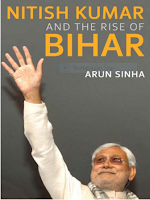I think it was cultural psychologist Sudhir Kakar who said songs of Rabindranath Tagore is a shared memory of all educated Bengalis. It is true, but is the statement entirely accurate?
Rabindrasangeet – which is now the commonest compound word in Bangla – was hardly as popular in Tagore’s lifetime (1861-1941). It started catching up in the 1930s and 40s thanks to some marvellous singers: Sahana Devi, Kanak Das, Rajeswari Dutta, Pankaj Kumar Mullick, etc. By the 1950s, it had become a part of every Bengali middleclass home courtesy AIR (All India Radio) and a now-extinct but then-revolutionary gadget called gramophone. Today, you won’t possibly find an educated Bengali woman between thirty and seventy whose parents didn’t try to make a Rabindra-sangeet singer out of her when she was a child. In the process, we have had two generations of exceedingly competent (mostly female) singers. For example, the English Language School that I teach at, almost every Bengali woman teacher sings beautifully.
Secondly and perhaps more importantly, Tagore’s songs became a mellifluous bond between the two Bengals. While between the fifties and the eighties most of the famous Rabindra Sangeet singers were from West Bengal, towards the end of the Twentieth Century, Bangladesh produced an array of captivating young singers, and the tradition continues. Iffat Aara Khan, Rezwana Chowdhury Banya, Papiya Sarwar, Aditi Mahasin, are just a few names from this Hall of Fame. And there are brilliant Bangladeshi singers in other genres too, for example, the incomparable folk singer Anuseh Anadil.
Thirdly and sadly, Rabindrasangeet almost pushed the other genres out of the musical landscape of West Bengal. And this happened despite the presence of composers like Sachin Dev Barman and Salil Chowdhury in the second half of the Twentieth Century. I am sure lots of educated music lovers will disagree on this, but no one can contest the fact that other Bengali lyricist-composers, particularly some contemporaries of Tagore, Atul Prasad Sen, Rajanikanta Sen, Dwijendralal Roy, and to a lesser extent, Kazi Nazrul Islam haven’t got the attention they deserve because of the dominance of Tagore songs.
And this is where Sounak Chattopadhyay, can play, is playing a fantastic role. Sounak, who has had a long training in classical music, sings intricate Bangla songs based on ragas. And he covers the gamut of early twentieth century composers I have just mentioned, including Tagore. And I find Sounak interesting for another important reason.
The common music lover is fond of popular music. They just love it. However, if someone helps them to connect popular music with its classical foundation, untrained music lovers get the pleasure of discovering a fascinating world that is hidden behind the wall that separates music lovers and trained musicians. For example, being musically illiterate, I didn’t know that the Mira bhajan “Shyam mane chakar raakho ji” and Tagore’s “Oi asan tole” are based on the same raga, despite hearing both scores of times. Sounak’s songs are a delightful fusion between Indian Classical Music and well-known Bangla songs. And someone who is untrained in music can see how the popular songs created by Bengali masters evolved from their classical base. The blurb on one of Sounak’s albums says “Experience the evolution”. Nothing could be truer.
It is not that the fusion between classical and popular Bangla music is entirely new. But I am inclined to believe that earlier experiments were leaning towards one of the two genres. Sounak has managed to strike the balance beautifully. I bow to this brilliant singer who has been reinterpreting well known Bangla songs to lay listeners like me.
*
One evening about a year ago, my wife and I were at a Starmark outlet. We heard a fascinating song being played on the PA system that almost numbed us. And we bought the three CDs that you see in this picture. Welcome Sounak Chattopadhyay to our life.
Since then, we would have played these CDs a thousand times. You read good books and watch good films again and again, because they never become old, on the contrary, every time you read or watch them, you discover some finer shades, subtle nuances that you missed earlier. Take The Old Man and the Sea or Bibhuti Bhushan’s Aranyak. They contain layers and layers of fascination. They become better with time, like wine and friendship.
I am not comparing incomparables, but our experience with Sounak’s songs has been similar.
Bengaluru / 14 November 2015
PS: If you speak Bengali, you'll most probably love Sounak's songs. If you don't, these songs could provide a beautiful introduction to Bengali music for you.






